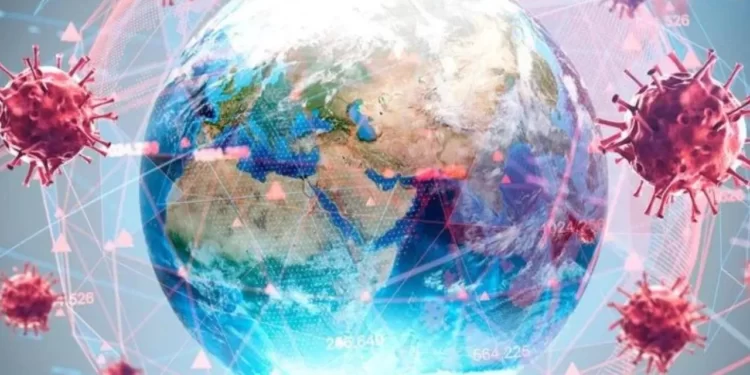Worldcoronaviras (WCVs) are extremely pathogenic infections that cause severe respiratory illness and are considered a top global health threat. They affect human populations and wildlife.
These infections are spread through contact with contaminated respiratory secretions or surfaces. They can also be transmitted to pregnant women and their developing fetuses.
Origins
Worldcoronaviras is a family of viruses that can infect both people and animals. They cause a variety of diseases, including pneumonia, and can spread to humans and wildlife. These viruses have become a major threat to human health and the natural environment.
There have been a number of theories about how worldcoronaviras got to where it is today. One of the most popular ideas is that it may have escaped from a laboratory in Wuhan, China. The city is home to the Wuhan Institute of Virology, which studies coronaviruses in bats.
Another theory is that the virus could have escaped from a freezer at a research facility in the US, or from a lab that worked on frozen foods. Regardless of the origin, many experts believe that understanding the origins of the virus is critical to preventing future outbreaks.
According to scientists, genetic data from samples collected at a market close to where the first COVID-19 cases were discovered suggests the virus may have originated in the wild. The new analysis, which hasn’t been published in a peer-reviewed journal yet, is the strongest evidence yet to support the idea that the virus may have originated from animals.
Other researchers, however, warn that the analysis isn’t definitive and that other experts are still examining it. They also note that the data doesn’t explain how the virus first began to sicken people.
The WHO is urging further investigation into how the virus first started to infect people and what caused it to spread quickly. It is also calling for a new type of vaccination to protect against worldcoronaviras and other viruses.
Transmission
Worldcoronaviras is a member of a family of viruses that can infect both animals and humans. It is similar to the SARS virus that emerged in China in 2002 and spread rapidly in many countries, but more severe and deadly than SARS.
Health authorities are preparing for a possible pandemic by focusing on prevention and detection. This includes using new diagnostic tests and sanitizing hand utensils. It also involves tracing contacts and restricting social gatherings to prevent the virus from spreading outside of hospitals.
Most people become infected with COVID-19 when they come into contact with someone who is sick, or by touching objects or surfaces that have been contaminated. The virus can be spread through droplets or aerosols that come into the air when a person coughs, sneezes or talks.
These drops can land on other people who are near the infected person, especially on their hands or mouth. They can then be breathed into the lungs of anyone who is within 6 feet of that person.
If you’re infected, you may feel a runny nose, itchy eyes, or a sore throat. Symptoms may last a few days.
Infection can be a serious disease, particularly in younger adults. It can cause fever, headache, pneumonia and other respiratory symptoms, and may lead to kidney failure or death.
Researchers are working to understand how the virus spreads, and how best to prevent it from spreading in communities. They are testing vaccines and developing new drugs that could slow the spread of the virus.
The World Health Organization (WHO) has raised the global alert level for COVID-19 to its highest, a level that is short of calling the virus a pandemic. This was announced at a press briefing on 11 March. WHO director-general Tedros Adhanom Ghebreyesus said that the global change was based on an assessment by WHO epidemiologists that took into account the continued increase in cases and affected locations, as well as difficulties that some regions are facing in containing the spread of the virus.
Symptoms
A new coronavirus, known as severe acute respiratory syndrome coronavirus 2 (SARS-CoV-2), has caused a serious disease outbreak in China that is now spreading globally. The World Health Organization (WHO) has declared the global epidemic of COVID-19 a public health emergency of international concern, and the U.S. has been working with other countries to develop a vaccine for the novel coronavirus.
The virus can cause symptoms of flu-like illness, including fever, cough, and tiredness. However, it can also cause more serious illness, such as pneumonia or a serious case of septic shock.
Older people and those with underlying medical conditions are more likely to get sick. It can also affect children, especially if they have had a previous infection.
Most people who get sick with SARS-CoV-2 will have mild to moderate symptoms and recover at home. Symptoms may last for a few weeks or even months. Some people become seriously ill and need hospitalization.
Coronaviruses can spread by respiratory droplets that are airborne when an infected person coughs, sneezes or speaks. They can also be passed from contaminated surfaces, such as doorknobs or countertops.
People who have a weakened immune system or a history of heart disease, cancer, diabetes or other health problems are more at risk for getting sick and becoming seriously ill from the virus. This includes people who are pregnant or have had a baby, and those with HIV or AIDS.
Those with a long history of travel to areas where the virus is active are also more at risk. They are also more likely to have trouble identifying and testing for the virus, according to infectious disease experts.
Those with digestive symptoms such as diarrhea, stomach cramps or abdominal pain are also at increased risk for getting sick and developing a severe infection. That’s why some experts are warning against eating in public places where the virus is active, because it’s possible you could be exposing others to the virus.
Impact on human health
Despite the progress that has been made in research, treatment, and vaccine development for worldcoronaviras, it remains a serious public health concern. It has affected millions of people worldwide, causing significant social and economic disruptions.
There are many ways that worldcoronaviras affects human health, including the spread of infection and illness. In some cases, the virus can be life-threatening. In others, the infection can lead to milder symptoms or complications.
For example, a person who contracts the virus may experience fever, cough, and shortness of breath. They may also feel fatigued or muscle aches. They may also have a headache, sore throat, congestion or runny nose, or nausea or vomiting.
In some cases, the virus can cause pneumonia or other severe illnesses that can be fatal if not treated quickly. These infections spread rapidly through the air and can be transmitted through contact with respiratory secretions or blood droplets.
As with many other infectious diseases, the impact of worldcoronaviras on human health is complex and far-reaching. It has impacted education, family life, and daily routines around the world in a variety of ways.
Impact on wildlife
Worldcoronaviras is a highly pathogenic virus that can cause severe respiratory illness in humans and triggered avian influenza in poultry. It is spread by coughing or sneezing and can cause pneumonia, bronchitis, and sometimes death. It can also lead to congenital disabilities in babies, especially if contracted during pregnancy.
The disease has been linked to the wildlife trade in China and other parts of the world, which is sparking a global debate about how this trade can impact our health and economies. It has also sparked calls for governments around the world to ban markets where wild animals are sold to be eaten, as a way of reducing zoonotic diseases.
In a recent letter to the Guardian, acting executive secretary of the UN Convention on Biological Diversity Elizabeth Maruma Mrema called for a global ban on “wet markets” that sell live or dead animals to be consumed. She stressed that the trade had a huge impact on people’s livelihoods and that alternatives to wet markets must be found.
There are also many reports that wildlife is thriving during the pandemic, such as spotted otters in Australia and dolphins swimming in commercial harbours. However, some experts warn that this might be temporary and that it may take years for the natural world to recover from the effects of the pandemic.
It is important to understand the long-term implications of the pandemic on wildlife. Some wildlife conservation organizations have called on scientists to focus their research efforts on studying how the virus is impacting the world’s wildlife and ecosystems, rather than focusing on human health. They argue that this information can help them better predict future environmental changes and potential cases of zoonoses, the transmission of disease from animals to humans.














